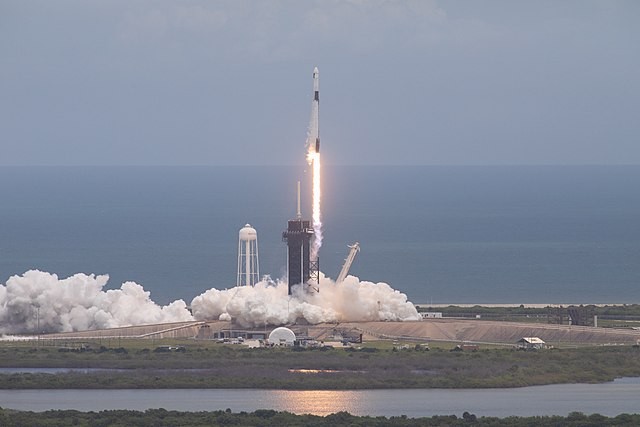When Elon Musk’s SpaceX Falcon 9 rocket was launched, it left a temporary hole in the ionosphere of the Earth. The rocket was blast off on July 19 from the Vanderberg Space Force Base in California, taking flight at immense speeds.
Aftermath of a Rocket Barrage
Pictures of the launch captured at the sky over Flagstaff, Arizona, show a faint red glow in the wake of the two-stage rocket. It was considered as a fingerprint of Falcon 9 having punched a hole in the Earth’s ionosphere.
Space physicist Jeff Baumgardner from Boston University reviewed the footage from the July 19 launch. According to him, the red glow indicates the second stage engine burning at 178 miles near the F-region peak for that particular time of the day, confirming that a hole in the ionosphere was created.
This event has happened before involving the same SpaceX rocket. On August 24, 2017, Falcon 9 was launched from Vanderberg Space Force Base carrying FORMOSAT-5 payload. The low weight caused the rocket to launch along a vertical path rather than travelling parallel to the surface of the Earth, resisting gravity and creating circular shockwaves. As a result, it ruptured a hole in the plasma of the ionosphere 559 miles wide. It was repeated once again when the Falcon 9 rocket was launched on June 19, 2022.
According to Charles C.H. Lin of the National Cheng Kung University in Taiwan, we are currently entering the era where rocket launches are becoming more usual and frequent due to lower cost by reusable rockets, while more powerful rockets are developed to deliver payloads to other planets. These factors will have more impact on the middle and upper layers of the atmosphere.
READ ALSO: NASA Seeks to Improve GPS Communications with Study of Ionosphere
Effect of a Punctured Ionosphere
Ionosphere is the layer of the atmosphere filled with charged particles where the Earth meets space. It stretches about 50 to 400 miles above the surface of the Earth, forming a boundary between the lower atmosphere and the vacuum of space. This boundary is the region where Earth-orbiting satellites hang out and also the layer that is influenced by solar activities.
Contrary to popular belief, a rocket does not go straight up into the outer space right after launch. In most cases, a rocket pitches over into the downrange direction to limit the pull of gravity and stress on the vehicle. The immense speeds of rockets as well as their exhaust fumes can affect the ionization of the ionosphere. As rockets travel, they release water and carbon dioxide which can reduce local ionization by up to 70 percent. The oxygen ions react with the rocket exhaust, producing light with the same wavelength as red auroras.
Aside from the signature red glow, another crucial effect of punctured ionosphere is the disruption on our Global Positioning System. The disturbances in the charged and neutral particles of the ionosphere can cause errors in the GPS navigation. In the future, as space rockets become increasingly powerful, it is possible that the hole created on the ionosphere may get worse, leading to more significant disturbance on navigation
RELATED ARTICLE: Researchers Can Forecast Earthquake with 80% Accuracy By Examining the Ionosphere
Check out more news and information on Ionosphere in Science Times.




![Earth's Quasi-Moon Kamo‘oalewa Could Originate From Lunar Surface Not Asteroid Belt [Study]](https://1721181113.rsc.cdn77.org/data/thumbs/full/53275/89/56/50/40/earths-quasi-moon-kamo-oalewa-could-originate-from-lunar-surface-not-asteroid-belt-study.png)










